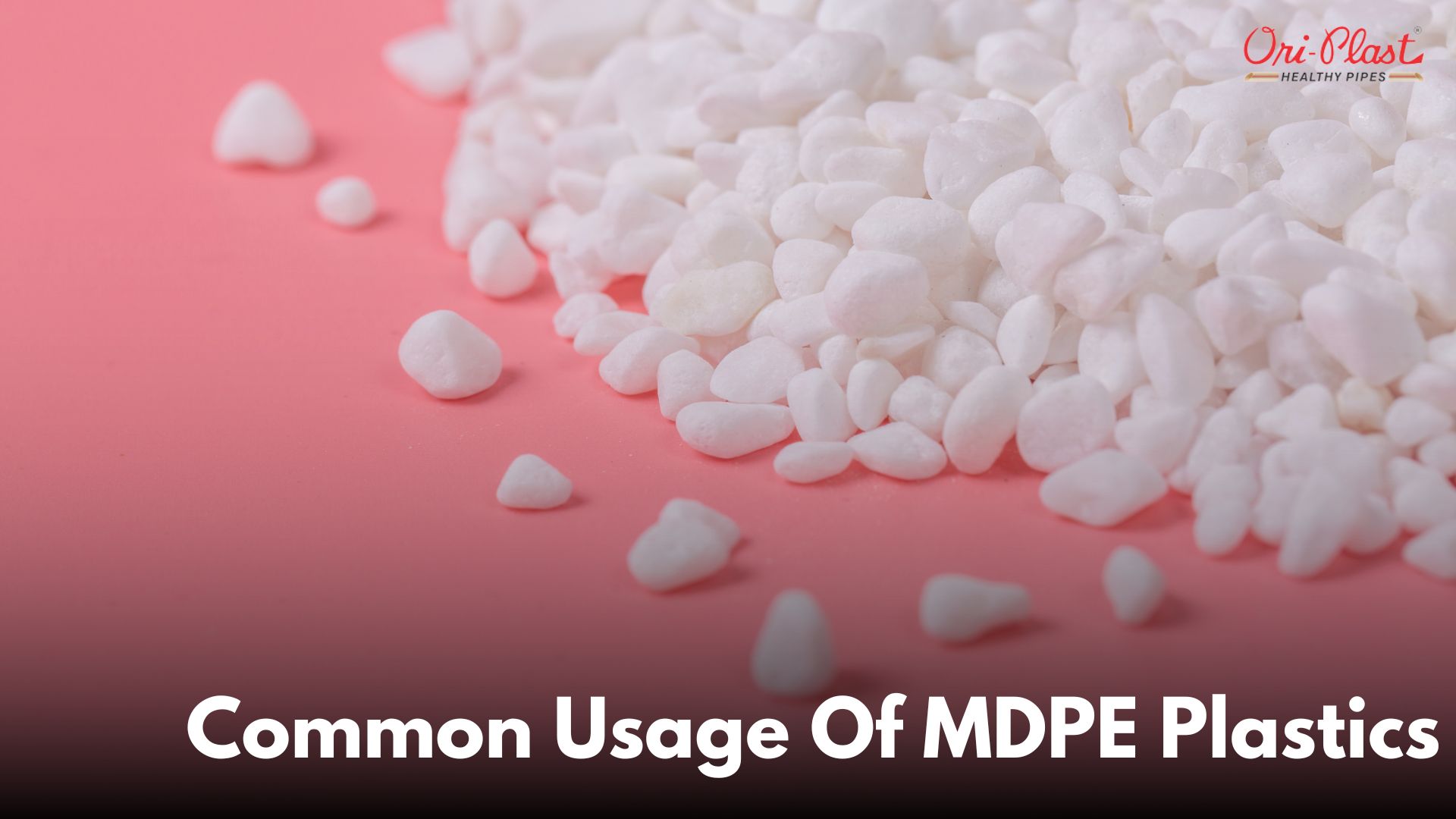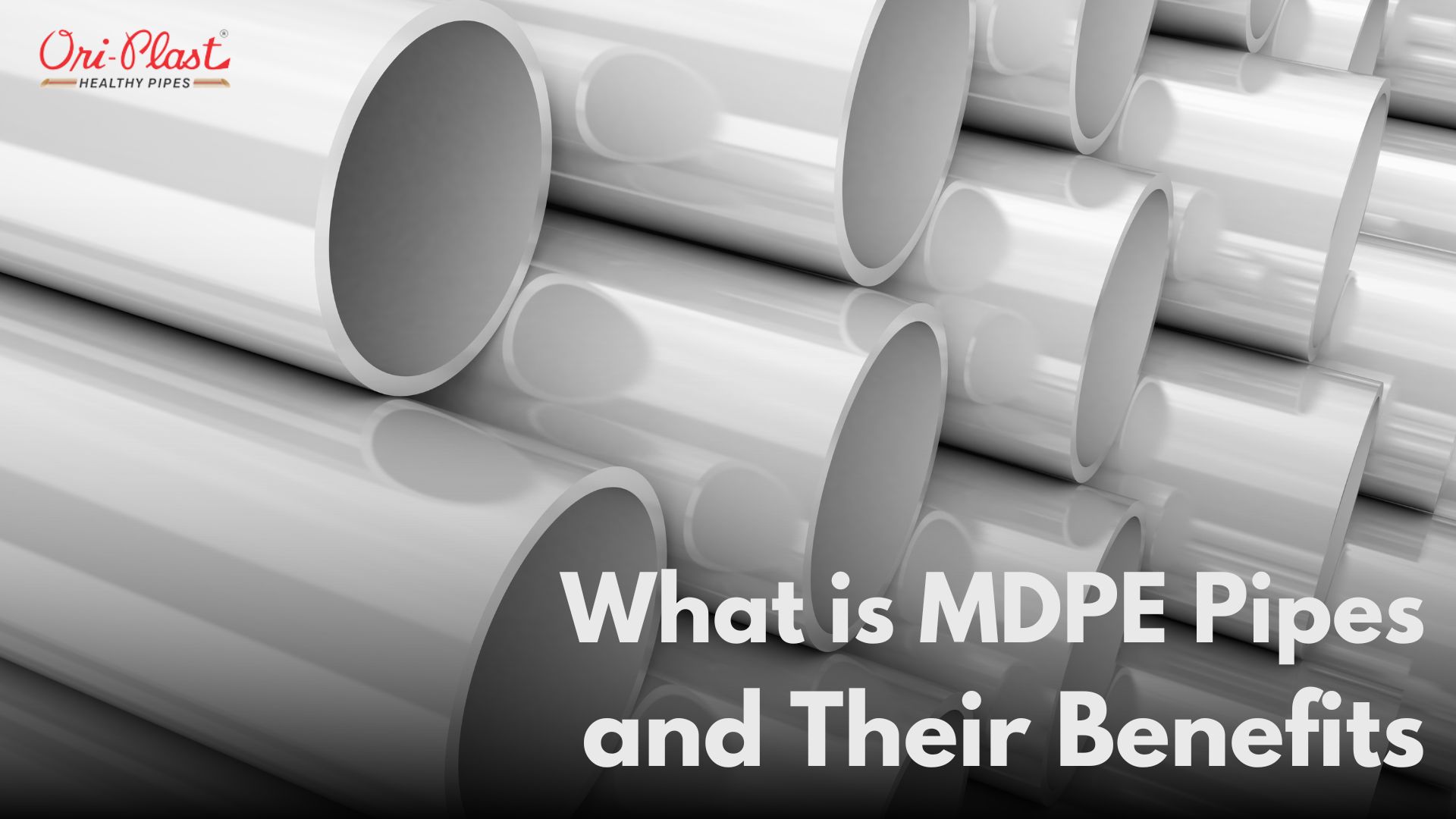MDPE, or Medium-Density Polyethylene, is a versatile type of plastic that falls between Low-Density Polyethylene (LDPE) and High-Density Polyethylene (HDPE) in terms of density and strength. While it might sound technical, MDPE is something you encounter almost every day, whether you realize it or not. In this post, we’ll explore the common uses of MDPE, its benefits, and why it’s become such an integral part of modern manufacturing and daily life.
What Exactly is MDPE?
Before diving into the benefits and uses, let’s break down what MDPE actually is.
- Medium-Density Polyethylene (MDPE): A thermoplastic made from the polymerization of ethylene.
- Density: It has a density ranging between 0.926 to 0.940 g/cm³, which places it between LDPE and HDPE in terms of flexibility and toughness.
- Structure: MDPE has a more structured molecular arrangement than LDPE, giving it more rigidity while maintaining some flexibility.
How MDPE is Manufactured
MDPE is produced through a process known as polymerization, where ethylene is subjected to heat and pressure in the presence of a catalyst. The conditions under which this process occurs determine whether the plastic will have a high, medium, or low density.
- Catalysts Used: Often, Ziegler-Natta catalysts or metallocene catalysts are used, which influence the density and characteristics of the polyethylene.
- Control Over Properties: By tweaking the temperature, pressure, and catalysts, manufacturers can control the molecular weight distribution and branching of the polymer chains, which, in turn, dictates the final product’s properties.
Common Applications of MDPE Plastics
MDPE's unique properties make it a popular choice across various industries. Here are some of the most common applications:
Pipes and Fittings
One of the most widespread uses of MDPE is in the production of pipes and fittings, particularly for gas and water distribution.
- Flexibility: MDPE pipes are more flexible than HDPE pipes, making them easier to install in areas with uneven terrain.
- Durability: They resist cracking and can withstand a fair amount of pressure, making them ideal for underground installations.
- Corrosion Resistance: Unlike metal pipes, MDPE pipes are resistant to corrosion, which is especially important for long-term water distribution.
Packaging Materials
MDPE is also widely used in packaging, from shrink films to grocery bags.
- Tear Resistance: The material's strength means it can withstand heavy loads without tearing, which is why it’s often used in heavy-duty bags.
- Impact Resistance: MDPE has a high resistance to impact, making it perfect for protective packaging materials that keep products safe during transit.
- Food Safe: MDPE is often used in food packaging because it is non-toxic and doesn’t leach chemicals.
Consumer Goods
From toys to household containers, MDPE finds its way into various consumer products.
- Durability: The combination of flexibility and strength makes it ideal for products that need to endure rough handling.
- Safety: MDPE is often used in products like children's toys because it’s less likely to break into sharp pieces, reducing the risk of injury.
Benefits of MDPE Plastics
MDPE’s popularity is not just due to its versatility. It also brings several benefits that make it a preferred material across industries.
Environmental Benefits
One might not immediately associate plastics with environmental benefits, but MDPE has some positive points in this area.
- Recyclability: MDPE is recyclable, and its recycling can reduce the need for virgin plastic production, thus conserving resources.
- Energy Efficient Production: Producing MDPE requires less energy compared to some other plastics, making it a more sustainable choice.
Physical Properties
The physical properties of MDPE are what set it apart from other types of polyethylene.
- Stress Crack Resistance: MDPE has excellent resistance to environmental stress cracking, which means it can withstand prolonged exposure to harsh conditions without degrading.
- Impact Resistance: It’s less brittle than HDPE and more resistant to impact, which is why it’s often used in outdoor applications.
- Tensile Strength: While not as strong as HDPE, MDPE offers a good balance of strength and flexibility, making it suitable for a wide range of applications.
Chemical Resistance
MDPE’s resistance to various chemicals is another significant benefit.
- Acid and Alkali Resistance: MDPE is resistant to many acids and alkalis, which is why it’s often used in industrial containers and piping.
- Solvent Resistance: It also resists many solvents, making it a good choice for containers that hold chemicals or other hazardous materials.
MDPE vs. Other Types of Polyethylene
Understanding where MDPE stands in relation to other types of polyethylene can help you decide when it’s the right choice.
MDPE vs. LDPE
- Flexibility: LDPE is more flexible than MDPE, which is why it’s often used in film applications like plastic wraps.
- Strength: MDPE is stronger and more resistant to impacts, making it better suited for industrial applications like pipes and fittings.
MDPE vs. HDPE
- Density: HDPE is denser than MDPE, which gives it more strength but less flexibility.
- Application: While HDPE is often used for things like hard plastic containers and large water pipes, MDPE’s flexibility makes it better for applications where some movement or bending is required.
How to Work with MDPE
If you’re in manufacturing or construction, you might be wondering about the best practices for working with MDPE.
Cutting and Shaping
MDPE is relatively easy to cut and shape, which is one of the reasons it’s so popular in manufacturing.
- Cutting Tools: Standard cutting tools like saws or rotary tools can be used to cut MDPE.
- Heat Forming: MDPE can also be shaped through heat forming, where it’s heated until pliable and then molded into the desired shape.
Joining MDPE
Joining MDPE pieces can be done through several methods.
- Welding: One of the most common methods is plastic welding, where heat is used to join two pieces of MDPE together.
- Mechanical Fasteners: MDPE can also be joined using mechanical fasteners like screws and bolts, although care must be taken to avoid over-tightening, which could crack the plastic.
- Adhesives: Certain types of adhesives are also suitable for bonding MDPE, although it’s essential to use adhesives designed for plastic.
Challenges and Considerations
While MDPE has many benefits, it’s not without its challenges.
UV Degradation
One of the primary challenges with MDPE is its susceptibility to UV degradation.
- Sunlight Exposure: Prolonged exposure to sunlight can cause MDPE to become brittle and crack over time.
- UV Stabilizers: To mitigate this, UV stabilizers are often added to MDPE used in outdoor applications.
Temperature Sensitivity
MDPE’s performance can vary depending on the temperature.
- Cold Weather: In extremely cold weather, MDPE can become brittle and more prone to cracking.
- High Temperatures: While it can withstand higher temperatures better than LDPE, excessive heat can still cause MDPE to deform or melt.
Innovations in MDPE
The world of plastics is always evolving, and MDPE is no exception. Here are some of the latest innovations:
Biodegradable MDPE
With increasing environmental concerns, researchers are working on developing biodegradable versions of MDPE.
- Additives: By adding certain biodegradable materials to the polymer mix, the lifespan of MDPE products can be reduced, making them more environmentally friendly.
- Applications: These biodegradable MDPE plastics are especially useful in applications like packaging, where the product’s lifespan doesn’t need to be as long.
Enhanced UV Resistance
As mentioned earlier, UV degradation is a challenge for MDPE, especially in outdoor applications.
- New UV Stabilizers: Advances in UV stabilizers have led to MDPE plastics that can withstand longer exposure to sunlight without degrading.
- Longer Lifespan: This innovation is particularly important for industries like construction, where MDPE is used in pipes and fittings exposed to the elements.
The Future of MDPE Plastics
Looking ahead, MDPE is likely to continue evolving to meet the demands of various industries.
Sustainability
As environmental concerns grow, there will likely be a greater emphasis on recycling and sustainability in the production of MDPE.
- Circular Economy: Manufacturers are increasingly focusing on creating a circular economy where MDPE products can be recycled and reused multiple times, reducing the need for virgin materials.
- Bioplastics: The development of bioplastics, which are derived from renewable resources, could also play a role in the future of MDPE.
Technological Advancements
Technology is another area where MDPE is likely to see significant developments.
- Smart Materials: Researchers are exploring the possibility of integrating smart technology into MDPE, such as sensors that could monitor the condition of MDPE pipes and alert users to potential issues before they become serious.
- Improved Manufacturing Processes: Advances in manufacturing processes could lead to MDPE plastics that are even stronger, more flexible, and more resistant to environmental factors.
Conclusion: Why MDPE Matters?
MDPE is a versatile, durable, and cost-effective material that plays a critical role in many aspects of modern life. From pipes and packaging to toys and containers, its unique combination of properties makes it a go-to choice for a wide range of applications. As technology continues to advance, the uses and benefits of MDPE are likely to grow even further, making it an essential material for the future.
Whether you’re in manufacturing, construction, or simply interested in the materials that make up the world around us, understanding MDPE and its benefits is crucial. It’s a material that not only meets the needs of today but is also poised to adapt to the challenges and opportunities of tomorrow.


